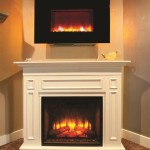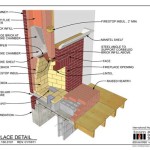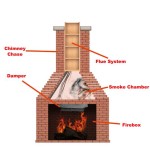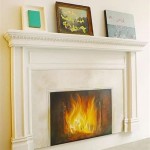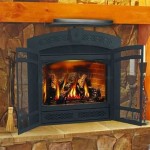Ledgestone Veneer Fireplaces: A Guide to Beauty, Durability, and Installation
Ledgestone veneer fireplaces offer a sophisticated and visually appealing focal point for any living space. This popular choice combines the aesthetic of natural stone with the practicality and affordability of a veneer, making it a worthwhile consideration for homeowners renovating or building new homes. This article explores the benefits, design considerations, installation processes, and maintenance aspects of ledgestone veneer fireplaces.
The Allure and Advantages of Ledgestone Veneer
Ledgestone veneer, unlike full-thickness natural stone, is a thin layer of natural or manufactured stone adhered to a substrate. This construction significantly reduces the weight and cost associated with traditional stone masonry. The resulting effect is a fireplace that boasts the texture and visual depth of stone but is easier and less expensive to install. Furthermore, ledgestone veneer is available in a wide variety of colors, textures, and patterns, providing homeowners with extensive design flexibility to match their existing décor or desired aesthetic.
One of the primary advantages of ledgestone veneer is its cost-effectiveness. Full-thickness stone requires specialized labor and significant structural support, increasing overall project expenses. Ledgestone veneer, being lighter and thinner, can often be installed without reinforcing the existing structure. This translates to savings in both material costs and labor fees.
Another significant benefit is the ease of installation. While still requiring a degree of skill and precision, installing ledgestone veneer is generally less complex than installing full-thickness stone. The interlocking nature of many ledgestone veneer panels simplifies the process, allowing for a quicker and more efficient installation. This reduced installation time further contributes to cost savings.
The durability of ledgestone veneer is also a key selling point. High-quality ledgestone veneers are resistant to fading, cracking, and chipping, ensuring a long-lasting and aesthetically pleasing fireplace surround. Proper sealing and maintenance further enhance the lifespan of the veneer, protecting it from moisture and other environmental factors.
Finally, the versatility of ledgestone veneer allows for its application in various fireplace designs. Whether the desired look is rustic, contemporary, or traditional, ledgestone veneer can be adapted to suit the specific style of the home. The wide array of available colors and textures facilitates the creation of a truly unique and personalized fireplace.
Design Considerations for Ledgestone Veneer Fireplaces
When designing a ledgestone veneer fireplace, several key factors must be considered to achieve the desired aesthetic and functionality. These include the overall style of the room, the size and shape of the fireplace, the color and texture of the veneer, and the surrounding architectural elements.
The style of the room should be a primary consideration in selecting the ledgestone veneer. For a rustic or traditional room, a more textured and earthy-toned veneer might be appropriate. Conversely, for a contemporary or modern room, a smoother and more monochromatic veneer might be a better choice. The goal is to create a cohesive and harmonious design that complements the existing décor.
The size and shape of the fireplace will also influence the choice of veneer. For a small fireplace, a smaller-scale veneer might be more visually appealing. For a larger fireplace, a larger-scale veneer can create a more dramatic effect. The shape of the fireplace, whether it is rectangular, arched, or curved, will also dictate how the veneer is applied and how the overall design is executed.
The color and texture of the veneer are critical elements in achieving the desired aesthetic. Lighter colored veneers can create a brighter and more spacious feel, while darker colored veneers can add warmth and depth. The texture of the veneer, whether it is smooth, rough, or stacked, will also contribute to the overall visual impact. It's crucial to consider how the color and texture of the veneer will interact with the surrounding light and décor.
The surrounding architectural elements, such as mantels, hearths, and built-in shelves, should also be taken into account when designing a ledgestone veneer fireplace. The veneer should complement these elements and create a unified design. For example, a rustic wooden mantel might pair well with a rough-textured ledgestone veneer, while a sleek marble hearth might complement a smooth and monochromatic veneer.
Finally, it's important to consider the overall scale and proportion of the fireplace in relation to the room. A fireplace that is too large or too small can look out of place. The goal is to create a fireplace that is visually balanced and contributes to the overall harmony of the space.
The Installation Process: A Step-by-Step Guide
The installation of ledgestone veneer requires careful planning and execution to ensure a professional and long-lasting result. While some homeowners may opt for professional installation, others may choose to tackle the project themselves. The following steps outline the general installation process:
Preparation: The first step is to prepare the surface to which the veneer will be applied. This typically involves cleaning the surface and ensuring that it is level and structurally sound. If the surface is uneven or damaged, it may need to be repaired or reinforced. In many cases, a layer of cement board is applied to provide a stable and consistent substrate for the veneer.
Applying a Scratch Coat: A scratch coat, a thin layer of mortar, is then applied to the cement board or prepared surface. This scratch coat provides a textured surface for the veneer to adhere to. The scratch coat should be allowed to dry partially before proceeding to the next step.
Selecting and Mixing Mortar: The correct type of mortar is essential for a successful ledgestone veneer installation. A polymer-modified mortar is typically recommended, as it provides superior adhesion and flexibility. The mortar should be mixed according to the manufacturer's instructions, ensuring a consistent and workable consistency.
Applying the Veneer: The ledgestone veneer is then applied to the scratch coat, one piece at a time. Mortar is applied to the back of each veneer piece, and it is firmly pressed into place. Spacers may be used to maintain consistent spacing between the veneer pieces. It is crucial to ensure that the veneer pieces are level and plumb.
Grouting (Optional): Depending on the desired look, the joints between the veneer pieces may be grouted. Grouting can enhance the overall aesthetic and provide additional protection against moisture. If grouting is desired, it should be done after the mortar has fully cured.
Cleaning and Sealing: Once the mortar or grout has cured, the veneer should be thoroughly cleaned to remove any excess mortar or residue. A sealant can then be applied to protect the veneer from moisture and staining. The sealant should be applied according to the manufacturer's instructions.
Final Inspection: After the installation is complete, a final inspection should be conducted to ensure that all veneer pieces are securely attached and that the overall appearance is satisfactory. Any necessary touch-ups or repairs should be made at this time.
Maintaining the Beauty and Longevity of Ledgestone Veneer
Proper maintenance is essential for preserving the beauty and extending the lifespan of a ledgestone veneer fireplace. Regular cleaning and periodic sealing can help protect the veneer from staining, fading, and other damage.
Regular cleaning should involve dusting or wiping down the veneer with a soft cloth or brush to remove any accumulated dirt or debris. For more stubborn stains, a mild detergent and water solution can be used. Avoid using harsh chemicals or abrasive cleaners, as these can damage the veneer.
Periodic sealing is also recommended to protect the veneer from moisture and staining. The frequency of sealing will depend on the specific type of veneer and the environmental conditions. Generally, sealing should be done every one to three years. A penetrating sealant specifically designed for stone veneer is recommended.
In addition to cleaning and sealing, it's important to inspect the veneer regularly for any signs of damage, such as cracks, chips, or loose pieces. Any damage should be repaired promptly to prevent further deterioration. Small cracks can often be repaired with a color-matched mortar or caulk. Loose pieces should be reattached using a strong adhesive.
The choice of cleaning agents is vital for maintaining the integrity of the ledgestone. Acidic cleaners should be avoided as they can etch or discolor the stone. Likewise, abrasive cleaners can scratch the surface. A pH-neutral cleaner designed for natural or manufactured stone is generally the safest option.
By following these maintenance guidelines, homeowners can ensure that their ledgestone veneer fireplace remains a beautiful and functional focal point for many years to come. Consistent care and attention will preserve the aesthetic appeal and structural integrity of the veneer, enhancing the overall value and enjoyment of the home.

Fireplace Makeover Featuring Ledgestone The Cultured Stoners

Ledgestone Stacked Stone Veneer Style Trending Buechel

Ledge Stone Veneer Interior Fireplaces Contemporary Living Room Toronto By Selex Houzz

Copper Ledgestone Fireplace Veneer
.jpg?strip=all)
3 Inspirational Ledgestone Veneer Fireplaces

Hudson Ledgestone Fireplace Residential Fond Du Lac Natural Stone

Ledgestone Veneer Natural Thin Stone Fieldstone

A Few Things About Ledgestone

Ledgestone Fireplace Gallery North Star Stone

Broe Ledgestone Residential Fireplace Fond Du Lac Natural Stone

